Supreme confidence, compassion, a flair for well-placed comedic interjections, the eyesight of an eagle, nerves of steel, quick wit and the endurance of a marathoner. These are the finer points of a professional auctioneer. And those attributes become even more crucial when an auctioneer is raising money for a charitable organization.
In fact, the most important person in the room is often the auctioneer—she (or he) with the skill set to motivate an audience to give vast amounts of money to causes that contribute to the greater good. Now, more than ever, philanthropic organizations are relying on the generosity of donors to keep them going, and three dynamic and commanding female auctioneers are doing their part to persuade people to open their hearts (and checkbooks).

Halie Behr. Courtesy Halie Behr 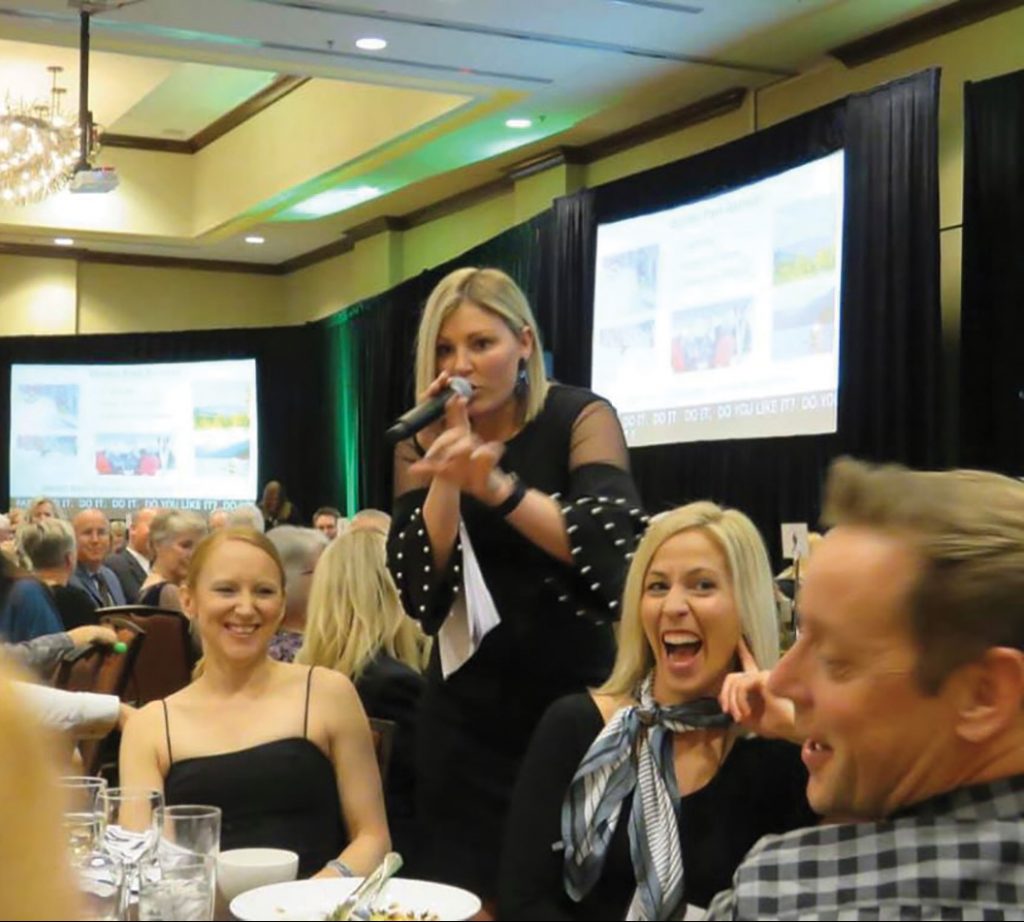
Courtesy Halie Behr 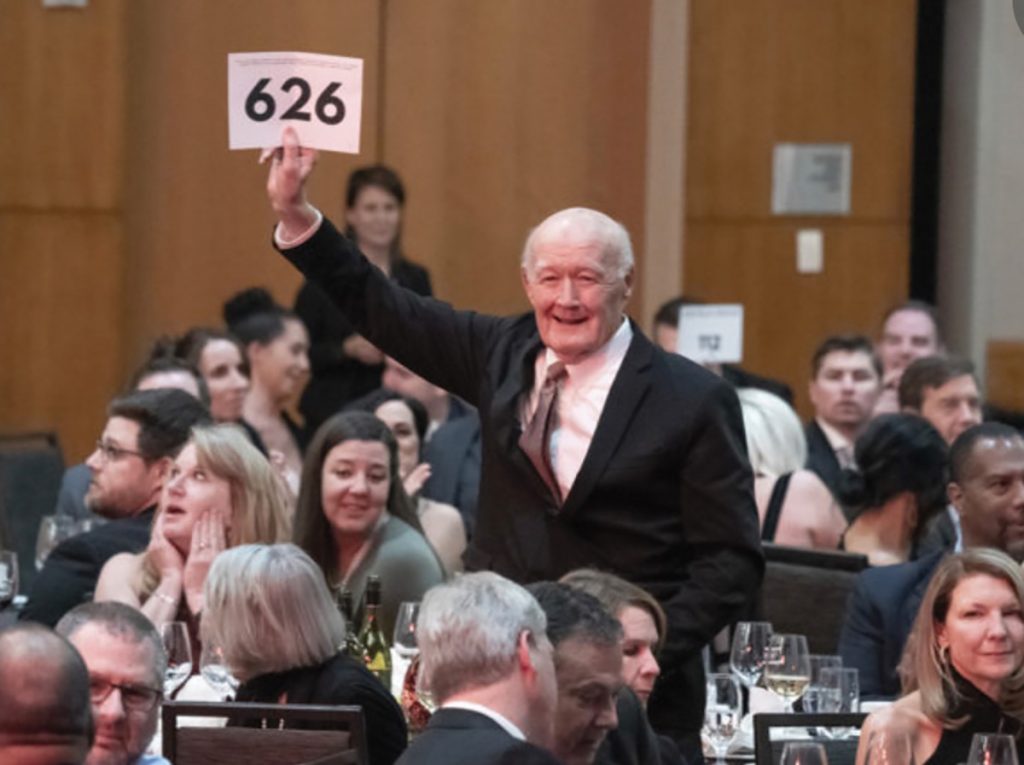
Courtesy Halie Behr
“I treat every event like it might be my last, and I give the audience a performance and show of a lifetime—running around in six-inch heels from table to table, chanting from one high-dollar increment to the next,” says Halie Behr, a 25-year-old 2020 Colorado and 2013 International Junior champion auctioneer and “fundaneer,” a title the Parker resident and World Wide College of Auctioneering graduate coined to reflect her philosophy and background. “I branded myself as a ‘fundaneer’ because I don’t just show up to an event and call bids; plus I’m classically trained and have a background in hospitality and events.” Behr also works with Handbid, a Centennial-based online fundraising and silent auction software provider.
Behr, who conducts upwards of 40 benefit auctions per year, has raised more than $4 million, an impressive amount that stems from her intuitive auctioneering style: “You’ve got to be able to read and understand your audience. I volunteer and tour with every organization I work with, and that helps me to better understand and speak from experience about their mission and cause. I become their advocate.”
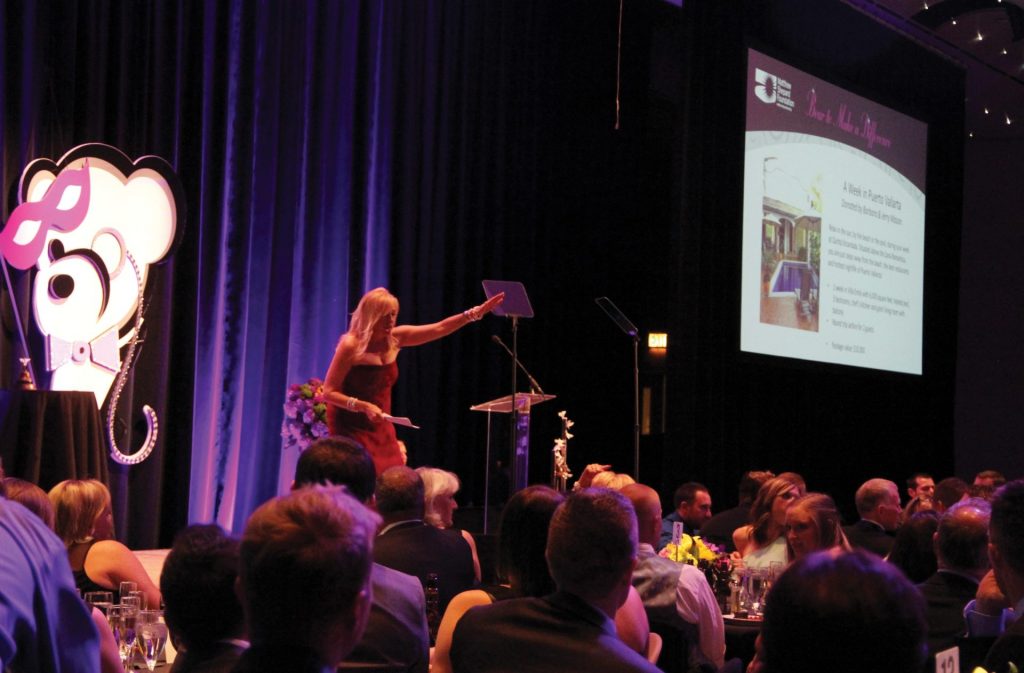
Shelly St John. Courtesy Shelly St John, The Auction Divas 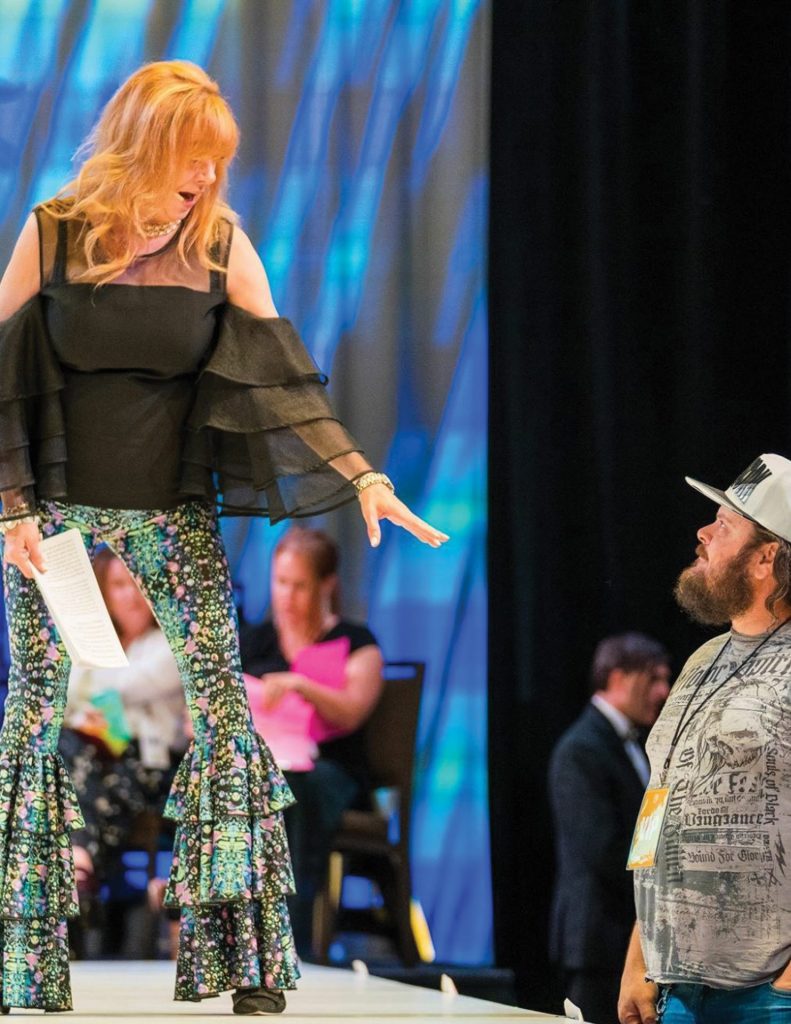
Courtesy Shelly St John, The Auction Divas 
Charlie Daniels and Shelly St John. Courtesy Shelly St John, The Auction Divas
Shelly St John, head diva of The Auction Divas, agrees: “Our primary function is to advocate on behalf of the organization we represent, and our primary influence comes when we inspire our audience to feel hope in their hearts.”
And St John, also a World Wide College of Auctioneering grad who’s made the Denver area her home for the last 22 years, should know: Since 2007, her company has conducted nearly 700 events (600 local, 100 national), raising an estimated $125 million for nonprofits, schools and religious organizations. St John shared the stage with recently passed singer/songwriter/musician Charlie Daniels, whose fiddle she sold for “thousands of dollars,” as well as his belt buckle, an off-the-cuff ask that also went for thousands. Additionally, she sold a private European yacht trip for $48,000 and 11 autographed and authenticated Peyton Manning football helmets for $60,500.
St John continues: “Each and every one of us will need help at some point, and those needs cross all socioeconomic, educational and racial boundaries. That’s what drives and inspires me.”

Heather Lauren Quirago. Courtesy Heather Lauren Quirago, HLQ Events, LLC 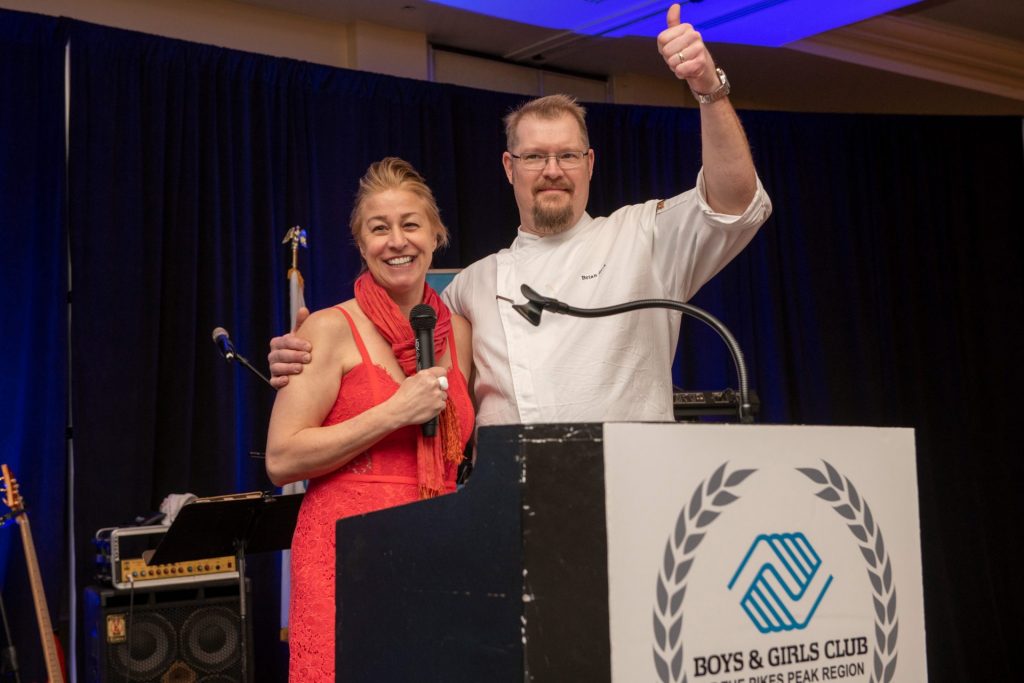
Courtesy Heather Lauren Quirago, HLQ Events, LLC
For her part, benefit auctioneer Heather Lauren Quiroga, owner of HLQ Events, LLC and development director of Lone Tree’s Tall Tales Ranch, recalls stepping in at the last minute to start the bidding wars at a Saints Peter and Paul Catholic Church gala in Wheat Ridge, where she was tasked with selling … a fruitcake. Yes, a fruitcake. “It seemed like a perfect flop in the making,” recalls Quiroga. It wasn’t.
Instead, the fruitcake, which Quiroga says “was the stuff of legend among the congregation,” resulted in fast and furious bidding. In the end, the $10 loaf netted nearly $1,000. “I’m most often asked to sell trips, fine jewelry and exclusive experiences, but these ‘fruitcake moments’ are the reason I love benefit auctions. Offering unexpected—even technically priceless—live items with a connection to your mission, especially those with an element of humor, go a long way in a crowd of supporters who understand why they’re there,” she says.
Quiroga has been remarkably successful in raising money, but her path to auctioneering wasn’t easy. Her first job—working in the art department of Butterfield and Butterfield (now Bonhams) in San Francisco—led nowhere. “After a year of watching the gallery’s auctioneers do their work, I felt drawn to the craft and asked to be trained on the block. I was disheartened when the owner informed me that ‘women’s voices were too difficult to listen to,’” remembers Quiroga, who promptly quit, drove immediately across the Bay Bridge and was hired as an auctioneer at Oakland, California-based Clars Auction Gallery.
At 24 years old, Quiroga was the gallery’s first female fine-art auctioneer. “Contrary to the Butterfields’ opinion, I find that a female voice is as powerful as any other when tasked with inspiring giving and articulating a mission,” insists Quiroga. “With the exception of very high-end pieces, we were expected to sell between 175 and 200 items per hour. Benefit auctions are an entirely different beast. I’m now as much a salesperson as a personality up there, tasked with selling a handful of live items carefully, but entertainingly.”
While all three auctioneers are masters at engaging a live audience, the pandemic has made them pivot, although the endgame is the same. “An organization’s message, needs and causes remain unchanged. The only difference is the method of delivery and the capture of online donations and bids,” says St John.
For Behr, who’s also shifted her focus to a virtual fundraising format, her role has changed to more of a host. “Instead of working at a quicker speed and using the typical auction chant, I take more time for explanation,” she says. “There are latency issues, so you have to slow it down.” Perhaps the best part of online auctioneering? No rubber chicken dinners.
Still, one thing hasn’t changed, insists Behr: “The auctioneer is still the great communicator and facilitator in creating an opportunity for donors to give. … We have a sense of urgency to create hope: hope to cure a disease, to provide better educational programs, to end homelessness and hunger. I’ve had tears of joy in my eyes at many events, because it feels so incredible to see people come together in support of a fundamental cause and do something for the greater good.”
Quiroga echoes that sentiment: “Raising money is only half the job. … Gathering with a community of supporters without leaving them inspired is a missed opportunity.”
TERMS, LINGO and PHRASES that will help prepare you for your next bidding war.
AUCTION CHANT: “The auction chant refers to the manner in which the auctioneer combines bid calling and filler language in fast-paced, rapid fire ‘auction speak,’” says St John. “Some are fast talkers like cattle auctioneers, while others are slower and more methodical like the art auctioneer.”
RESERVE PRICE: The minimum price that a seller will accept for an item.
HAMMER PRICE: The winning bid amount, aka, the last price acknowledged by the auctioneer before she officially seals the deal with a thunderous bang of the hammer or gavel.
ONE MONEY: A single bid for an entire lot, or several items at once. If you bid $100 for five diamond rings, for example, you’d get all five rings for the bargain price of a Benjamin. Lucky you.
SYNDICATE BIDDING: Syndicate bidding—a kaboodle of guests who bid as an entire group on one item—is a great way to score a high-end holiday package on the cheap.
FUND-A-NEED: The Fund-a-Need, or pledge appeal, occurs when the auctioneer solicits spontaneous donations, which often result in raising a tremendous amount of additional funds.
LAST GIFT WINS: After the final paddle is raised or the Fund-a-Need level concludes, there’s often “last gift wins.” There’s a pre-determined entry fee—normally $50 or $100—and the last person who raises a paddle wins the prize. Each time someone raises their paddle, they’re making a new donation at the entry dollar amount. “It’s a fun-filled, fast-paced game that engages everyone,” explains St John.


